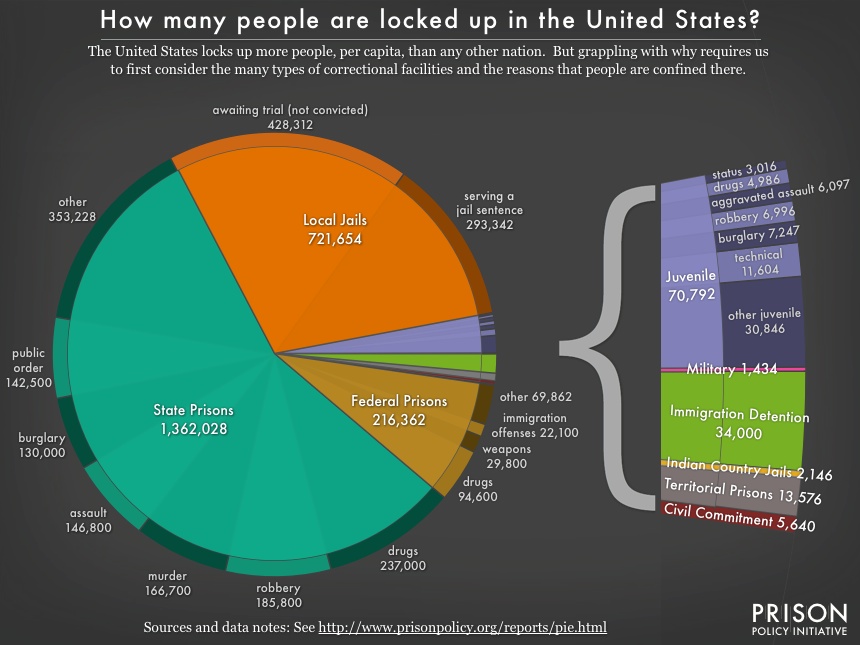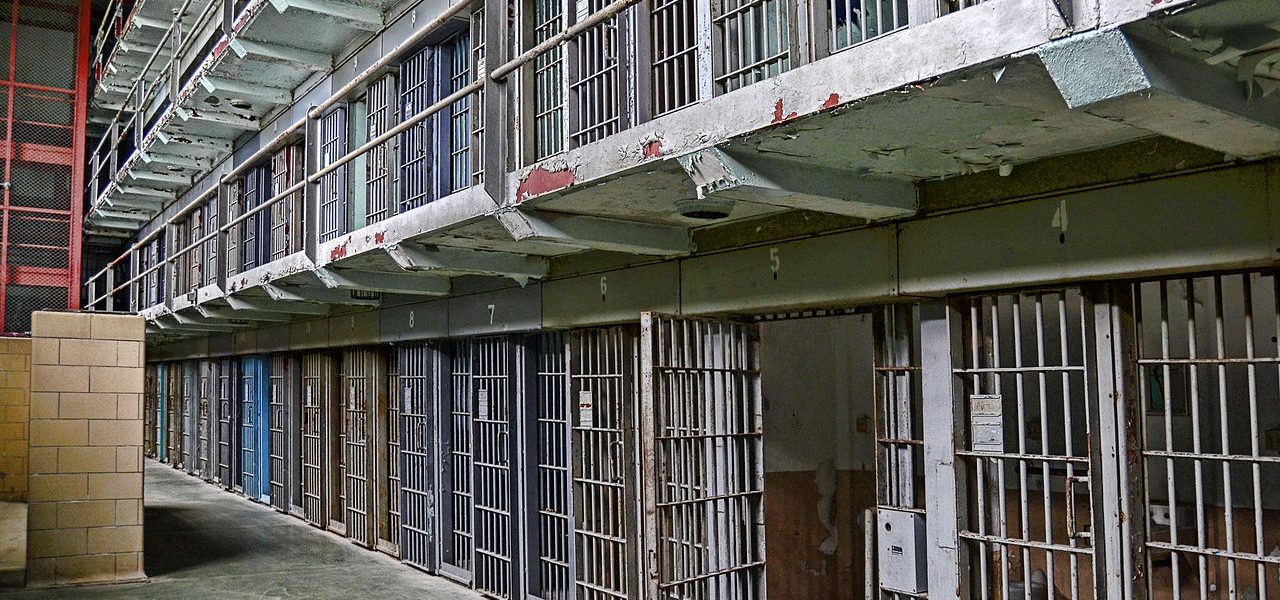During the Baltimore riots earlier this year, I ran across an article that spoke to the community impact on Baltimore due to the lack of an older generation with the Black community. The article, titled ‘Lord of the Flies’ comes to Baltimore, interviewed 28-year-old Zachary Lewis, with the author asking him about the absence of older men. He responded:
“This is old here,” he said, pointing to himself. “There ain’t no more ‘Old Heads’ anymore, where you been? They got big numbers or they in pine boxes.” In street syntax, that meant long prison sentences or death.
Big Prison Numbers
I’ve been thinking some about the prison system in the U.S. since then and I decided to spend some time writing about it.
To begin this series, in this post, I wanted to just look at some general stats from various sources about the prison population in the U.S.
According the recent numbers, there are more than “2.4 million people in 1,719 state prisons, 102 federal prisons, 2,259 juvenile correctional facilities, 3,283 local jails, and 79 Indian Country jails as well as in military prisons, immigration detention facilities, civil commitment centers, and prisons in the U.S. territories.” And this does not account for the 3,981,090 adults on probation, and 851,662 adults on parole.[1]
To visualize what that looks like, consider this chart from the non-partisan Prison Policy Institute:

In total, there are over 6.89 million people under supervision by various correctional systems in the United States.
The most interesting stat that I have seen so far, however, has been the incarceration rates by state. Five states imprisoned at least 600 persons per 100,000 state residents on December 31, 2013:
- Louisiana (847 per 100,000 residents of Louisiana)
- Mississippi (692 per 100,000)
- Oklahoma (659 per 100,000)
- Alabama (647 per 100,000)
- Texas (602 per 100,000) [2]
What these states have in common is their location: they are all in the South. How do we interpret this data? That’ll be the subject of the next post.
NOTES:
[1] From the non-partisan Prison Policy Institute, accessed July 12, 2015. [2] From the Bureau of Justice Statistics, accessed July 12, 2015.






